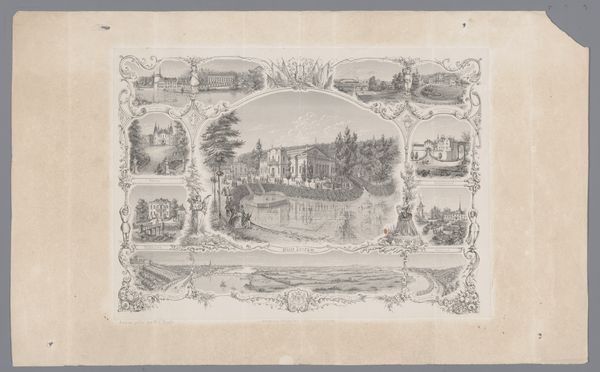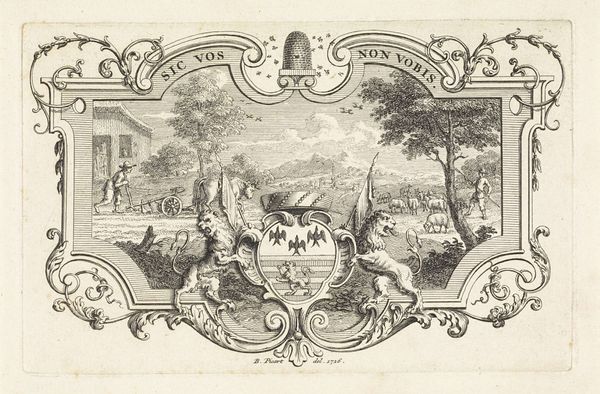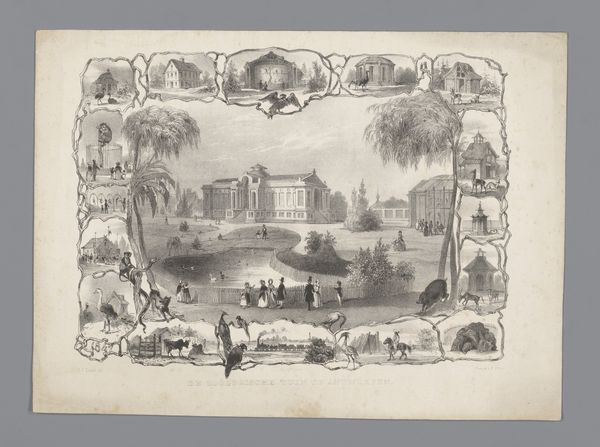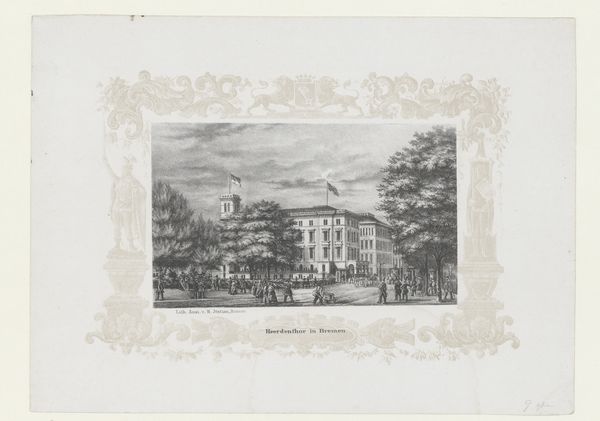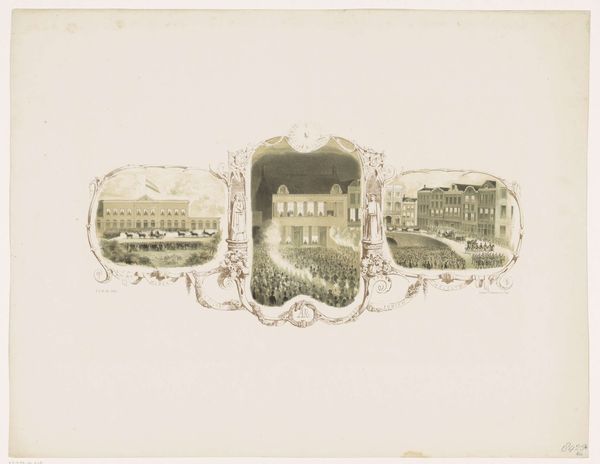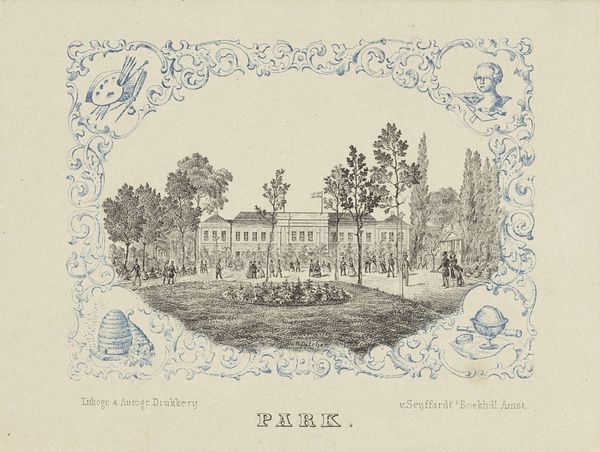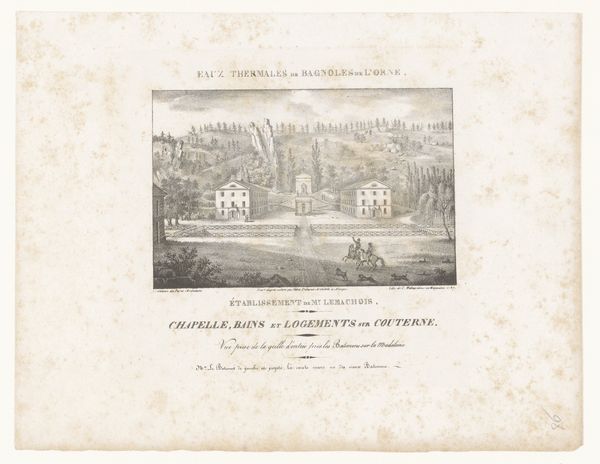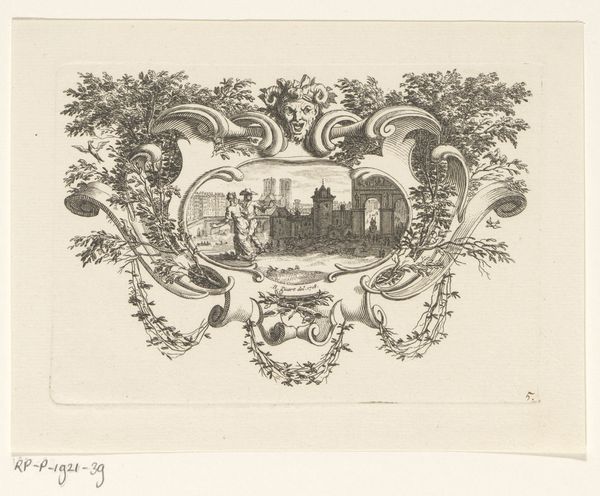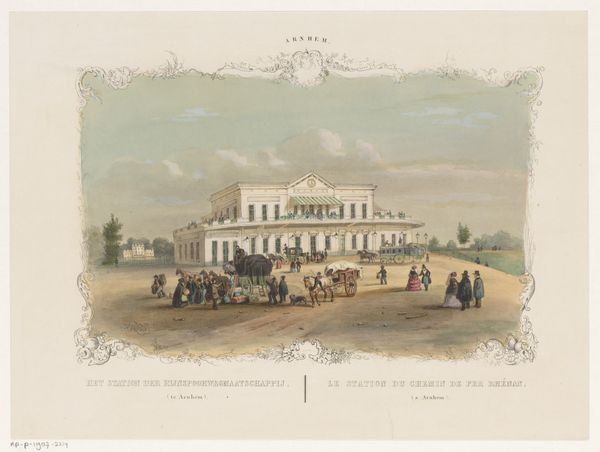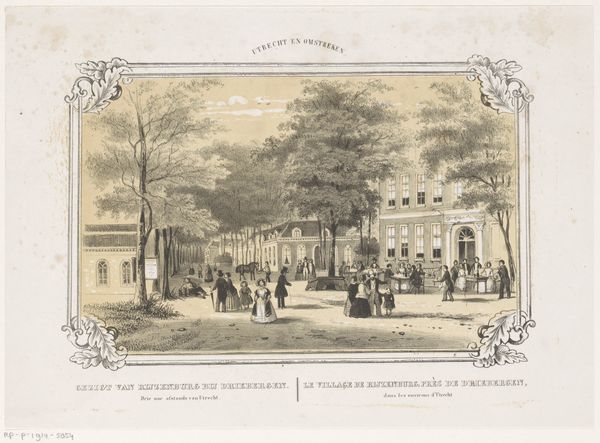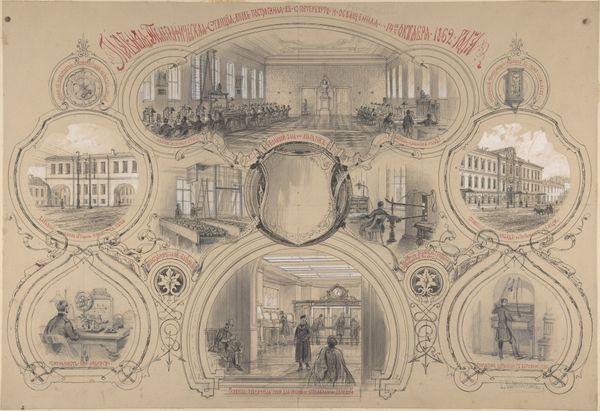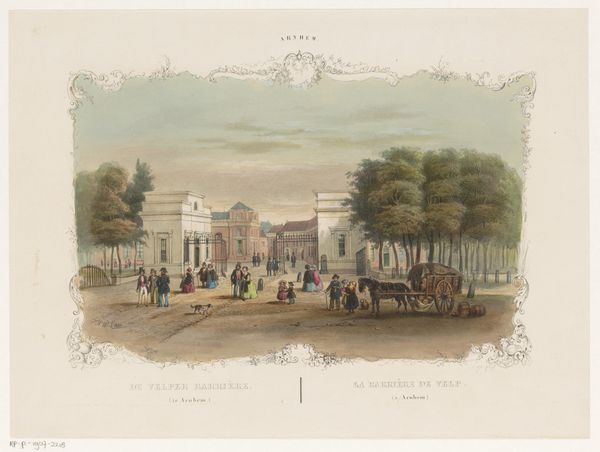
Dimensions: height 68 mm, width 98 mm
Copyright: Rijks Museum: Open Domain
This calling card was made by N. Vanhecke, a lithographer based in Brussels. Lithography is a printmaking process that relies on the aversion between grease and water. The design is drawn on a flat stone or metal plate with a greasy crayon, then the surface is treated so that ink adheres only to the drawn areas. The resulting prints, like this one, have a distinctive, slightly grainy texture that captures fine details. Look at the way Vanhecke has used this technique to depict a grand building, perhaps a government office, surrounded by a bustling city scene, framed by delicate floral motifs. The choice of lithography speaks to a shift in art production. Unlike traditional engraving, which required highly skilled artisans, lithography allowed for quicker, more repeatable results. It reflects the rise of commercial printing and the increasing demand for visual communication in a rapidly industrializing society. In understanding this card, we realize how it stands as a testament to the changing landscape of art, labor, and commerce.
Comments
No comments
Be the first to comment and join the conversation on the ultimate creative platform.
